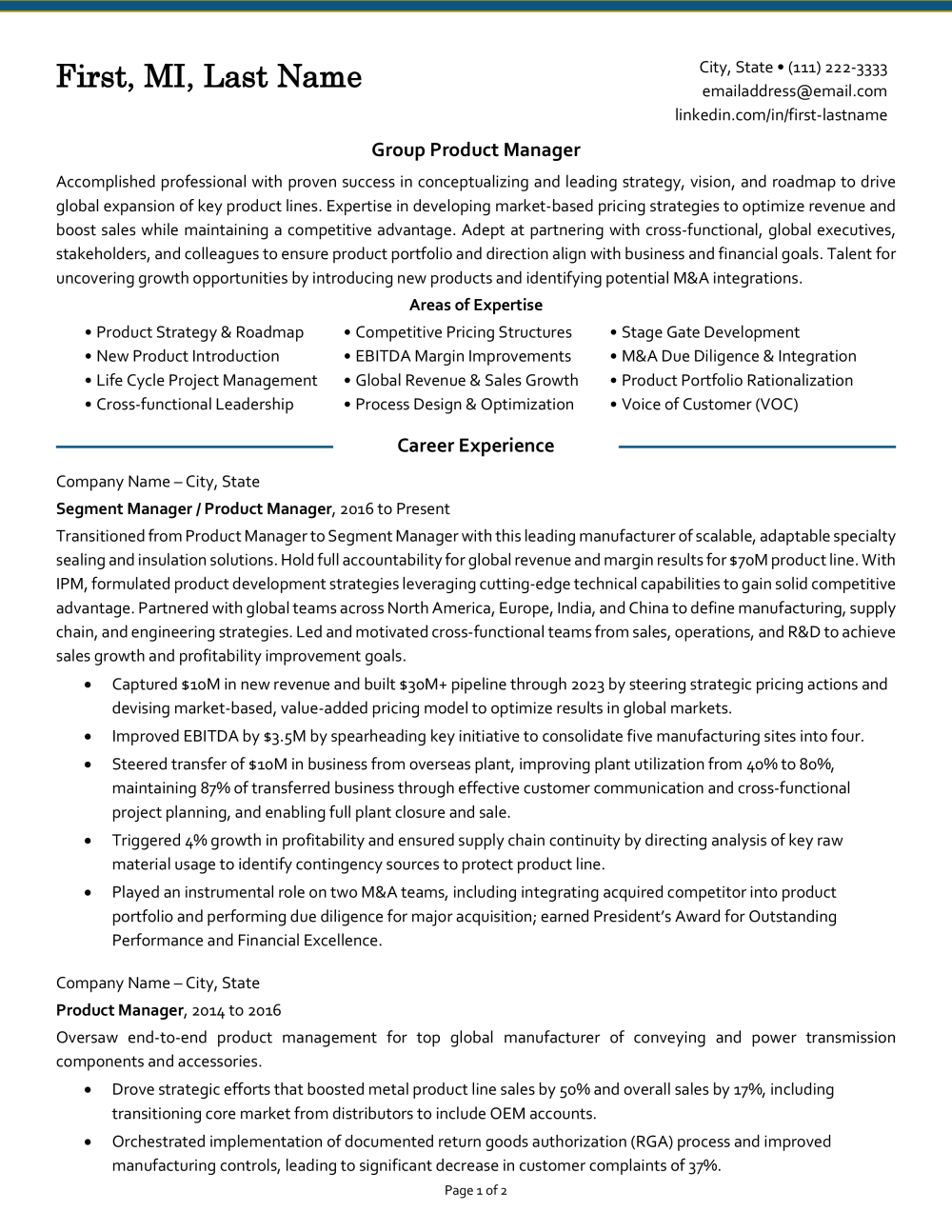Canadian Resume Format: How to Make a Canadian Resume

12 min read

If you’re looking to find a job in Canada, you need to have a resume -- not a CV – to begin your job search. This is easy for job seekers who already use a USA resume but will require more adjustments for job seekers with a more comprehensive CV. In this article, we will go over some essential tips for creating a Canadian resume. At the end of the article, we’ve included a sample resume you can use to increase your chances of getting a new job in Canada.
ZipJob has a wide network of career experts and hiring managers, so the information on our blog is based on real experience from people who know how to land a job in the US and Canada. Spoiler alert: they're pretty similar systems!
Is the Canadian resume format different from the American resume format?
So, we already spoiled it for you, but there aren’t a whole lot of differences between the Canadian and US resume formats. Both countries use what’s considered a traditional format that includes your contact information, a professional summary, your work history, and education. The biggest difference is in the language. For example, Canadian English uses the word “colour” whereas the US would use “color.” You’d also find metric units on a Canadian resume instead of the imperial system of measurement found on a US resume.
The 3 resume formats you can use in Canada
There are only three types of formats you should use for a resume in Canada:
Traditional reverse chronological
Strategic functional resume
Balanced hybrid resume
All of these formats include the same basic information with a different layout.
Expert Tip
EXPERT TIP: View 200+ more professional resume samples for all industries, along with a free template and a 2020 guide to writing resumes from our experts, just click here.
It is vital to choose the right resume format for the job. Your choice should be determined by the years of experience you have and the type of job you’re seeking. We’ll go into detail about when to choose a different Canadian resume format, but most job seekers use the reverse chronological resume format.
Most Canadian employers use an ATS (Applicant Tracking System) to screen your resume before it's ever seen by a human. About 75% of resumes are filtered due to applicant tracking systems and will never be read by the recruiter or hiring manager. Many times the candidate is qualified, but the resume is not optimized for ATS.
Key Takeaway
KEY TAKEAWAY: If you’re seeking a job in Canada, it’s important to use a proper Canada resume format to maximize your chances of securing employment.
The best resume format for a Canadian resume is the reverse chronological
A reverse chronological resume details your job experience in reverse chronological order, starting with the most recent position. This is the best resume format if you have at least some experience in the workforce. It is the best format to use for getting past the Applicant Tracking Systems (ATS) that companies use because the scanning software can easily parse information from a reverse-chronological format. It’s also what hiring managers expect to see.
To put it bluntly, there isn’t a human being alive who will read your resume. They’re going to skim through it until something jumps off the page at them. Then, they’ll stop and read. The reverse-chronological format puts things in a simple layout with strategically divided sections that lay out your career history in an easily digestible manner.
However, if you are a recent college graduate or have significant work gaps on your resume, however, you should consider the hybrid or functional resume formats.
When to use a hybrid or functional Canada resume format
The functional resume is a versatile format that focuses on your skills and qualifications instead of experience. While your employment history is still included, it is usually listed after your skills and education section. That places greater emphasis on those skill sets, showcasing your suitability for the position. As a result, this option can sometimes be used effectively by newcomers to the workplace and those who are changing careers.
A hybrid resume retains the expanded reverse chronological work experience section, but it’s no longer the bulk of the resume. Instead, the skills section is also expanded to include a summary of qualifications in addition to the technical skills or core competencies section.
Top 3 things Canadian employers and recruiters want to see on a resume
You can maximize your odds of landing your dream job if you understand what Canadian employers want to see. That can help you to shape your Canadian resume format to fit those desires. Here are the questions you need to answer on your Canadian resume:
1. Hard skills
Make sure your Canada resume format emphasizes the technical skills needed to perform the job. These may include data analysis, language skills, computer skills, or similar qualifications relevant to the position.
2. Soft skills
Canadian employers appreciate soft skills on a resume, including people skills. These soft skills can include everything from communication and teamwork skills to problem-solving, flexibility, and the ability to learn and adapt. Include these vital skills throughout your resume with examples, results, and metrics.
3. Professional qualifications
Canadian employers, like most other employers, value relevant professional qualifications and achievements. Make sure you are qualified by the right institutions for the job you’re applying for.
Expert Tip
EXPERT TIP: Enhance your resume with these 7 free certifications.
How to write a Canadian resume
Once you choose the format you’re going to use and have a list of your relevant skills, experiences, and qualifications, it’s time to write. Your resume should contain the following sections (at least):
Contact information: This is your name, location (with postal code), telephone number, email address, and any relevant social media profiles (like an optimized LinkedIn profile). Basically, the details that the hiring manager needs to get in touch with you if they want to call you for an interview.
Title and profile summary: At the top of your resume – just beneath your contact information – should be a title that mirrors the title of the job you’re applying to. It should be followed by a three to five-sentence paragraph that highlights your skills and qualifications in a way that shows prospective employers what you bring to the table for them.
Skills: This is a simple list of up to 15 core competencies. It should contain a mix of hard and soft skills that are specifically tailored to the job you want.
Work history: Whether you choose the reverse-chronological format or the hybrid format, you’ll always start your work history section with your most recent job. You’ll list the company name, the dates you were employed, the title you held, and three to five bullet points that call attention to the achievements you had in the position. From there, you work backward approximately 10 years to fill in the rest of your work history section.
Education: The degrees you’ve earned, professional development classes you’ve taken, and any licenses or certifications you possess should go under “Education” at the end of the resume.
It’s important that you use relevant keywords throughout your resume that are tailored to each job you want to apply to so that your resume makes it through the ATS. These programs are scanning resumes for those keywords, so not including them could be the thing that gets your resume rejected by the system. Being rejected by the ATS is one of the top reasons that job seekers are ghosted by companies – the human beings at the company won’t even know you exist.
The final step is to proofread and edit. If there is one thing that will turn a hiring manager off, that’s typos and grammatical errors. And it happens a lot! Do a quick search for the word “manger” on LinkedIn and you’ll see countless profiles where people use that spelling instead of the “manager.” Not only should you read your resume, but you should also have someone you trust read it to because your brain will interpret the words as they’re supposed to appear, not necessarily how they are actually written.
Canada resume sample
They say seeing is believing, so to help you visualize all of these steps, here’s a sample Canadian resume. Use it as inspiration or as a template for how to format your own resume.

Additional tips for writing a Canadian resume
To modify your resume to the Canada resume format, it’s important to pay attention to the small details.
1. Include only the relevant information
Starting with your contact information, include your name, location (city and province), phone, email, and LinkedIn profile URL at the top of your resume. If you have a second page, it should also include your name at the top of the page.
Keep your skills, experience, and additional resume information highly tailored to the job you're applying for. This might mean omitting jobs from 10+ years ago on your resume or adding in volunteer work.
2. Don't include too much information
Don't include any personal details like your date of birth, parent or spouse names, marital status, or identification numbers. Canadian employers don’t want to see this and may reject your resume automatically to avoid discrimination concerns.
3. Include a cover letter
Take the extra time to write a custom cover letter for each job you apply to. It's professional, polite, and shows that you care about this position. It's one of the best things you can do to stack up well against candidates with similar experience to you!
Expert Tip
EXPERT TIP: Professional resume writers know how to organize your resume to appeal to hiring managers. Check out our guide to the best resume writing services to find your perfect fit!
Canadian resume vs. European resume
If you’re moving from Europe to Canada or vice versa, you’ll see a great difference in the format of the document you use to apply for a job. Mostly, you’ll see that European companies want a curriculum vitae (CV) instead of a resume. Because a CV is more of a chronicle of your career life, it’ll have a lot more information on it and, therefore, will be longer. A resume in Canada is generally one to two pages in length while the European resume (CV) is up to three pages in length.
NOTE: In Canada and the US, using three pages can be seen as grandstanding and should be reserved only when you have a lot of career extras like specialized research or publications.
Additionally, European resumes will contain the information that we mentioned in the “Don’t include too much information” section above, including date of birth, nationality, and marital status. If you’re writing a European resume, you’ll also find that different countries have varied requirements – for example, you wouldn’t include marital status on your resume in Germany – while all provinces of Canada would accept the same resume format.
Canadian resume frequently asked questions (FAQs)
How long should my resume be? The general rule of thumb is that if you have less than 5 years of experience, then your resume should be on one page; on the other hand, once you get to 5 years of experience (and especially as you approach 10 years of experience), you’ve earned a second page.
Should I include a photo on my resume? The short answer here is, “No.” The ATS can’t properly parse information from resumes that contain images. It would read the image as a bunch of funky characters which could cause the ATS to think your resume file is corrupt, causing it to be rejected. On top of that, some employers find photos on resumes to be unprofessional – as if the candidate thinks that their looks will help them land the job.
Should I include references on my resume? Again, the short answer is, “No, never.” Don’t even allude to the fact that references are available. If the hiring manager wants references, they’re going to ask for them whether you have them available or not. The best thing to do is create a new document for your references so that when they ask, you’ll have it available to give over.
Do I need to translate my resume into French? It depends on the job description. If it is written in French, then your resume should absolutely be translated into French. You’ll see this mostly in Quebec, but it’s possible to see it across all provinces. Don’t assume they’ll accept a resume in English unless the job posting specifically says they will.
Does my Canadian resume need to include my salary history? It isn’t mandatory to include your salary history, but there are some employers who will ask for it. Even in those instances, it’s a good rule of thumb to have it separate from your resume whenever possible.
Do hobbies, volunteer work, and interests have a place on my Canadian resume? You can definitely include your hobbies and interests. But remember, they’re not likely to be the things that get you an interview. So, if your resume is spilling over to three pages, consider deleting hobbies and interests. However, if you’re hobbies and interests are professionally relevant, then you probably want to try to find a way to include them. For example, if you are on the board at a local nonprofit organization and were able to raise some money last quarter to ensure the continuance of a failing program, then that would definitely be worth mentioning.
Keep it simple
The resumes in Canada are very similar to resumes in the US, but vastly different from CVs in other countries. Stick to resume formats that employers will expect, and play up your strengths. By using these Canada resume format tips, you can increase your chances of securing an interview and landing an eventual job.
Good luck with your job search!
If you need a new resume for a job in Canada, ZipJob is ready to help you. Our staff of professional resume writers are fully versed in the ins and outs of what will be required by prospective Canadian employers and we’d love to be your partner in securing a new job.
Recommended reading:

Written by
Marsha Hebert, Professional Resume Writer
Marsha is a resume writer with a strong background in marketing and writing. After completing a Business Marketing degree, she discovered that she could combine her passion for writing with a natural talent for marketing. For more than 10 years, Marsha has helped companies and individuals market themselves. Read more advice from Marsha on ZipJob's blog.
